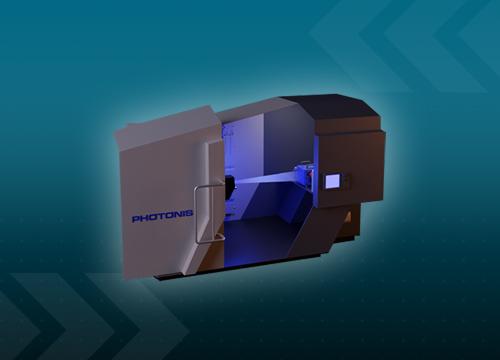Cheetah+ Series for High-Speed FSO Communications
Introduction to Free Space Optical (FSO) Communications
In an era where rapid and reliable information transfer drives technological progress, Free-Space Optical (FSO) communication systems offer a cutting-edge solution. Unlike traditional fiber-based methods, which are often impractical or costly in remote or dynamic environments, or point-to-point microwave which are bandwidth limited, FSO systems enable data transmission through "free space," such as air, outer space, and vacuum. By leveraging laser beams for optical communication, these systems address critical challenges in connectivity and additional bandwidth requirements as well as expanding the scope of modern communication technologies.
Explore how Exosens offers the high-speed Shortwave Infrared (SWIR) Camera, Cheetah+ series, specifically designed to enhance Free-Space Optical communication systems with superior pointing, receiver, and transmitter performance, ensuring reliable data transfer across various ranges.
Significance of FSO Communication Systems
FSO communication systems play an integral role in both terrestrial (ground-to-ground) and extraterrestrial (space-to-ground) optical communication technologies. These systems harness the potential of laser beams to establish high-performance communication links, addressing challenges like line of sight obstacles, bandwidth limitations, and interference common in traditional systems.
Applications of FSO Systems:
- Ground-to-Ground Communications:
- Outdoor wireless networks, including 4G and 5G and preparing for 6G deployments.
- Last-mile connectivity in urban, campus and rural areas.
- Back-haul optical transport
- Ground-to-Space Communications:
- Reliable and secure links for Earth-observation satellites.
- Efficient data transfer for military satellites with limited connection windows.
- Enhanced support for extraterrestrial and interplanetary communication.
The key advantages of FSO Systems include high performance, offering robust data throughput and secure transmission even in challenging atmospheric conditions; bandwidth flexibility, providing higher bandwidth compared to radio frequency systems; cost-efficiency, eliminating the need for extensive cabling and thereby reducing infrastructure costs; and scalability, being easily deployable for both small-scale networks and large-scale space communications.
Why SWIR Technology is relevant in Free-Space Optics?
Free Space Optical (FSO) communications are highly dependent on the quality and reliability of transmitted signals, but they often encounter challenges that can hinder performance. For instance, weather effects such as fog, rain, and snow obstruct signal transmission, making it difficult to maintain a stable connection. Physical interference from obstacles like trees, buildings, and birds can also disrupt the signal path, causing interruptions. Additionally, atmospheric phenomena, including dust, water vapor, and scintillation, scatter light and degrade the overall signal quality, further complicating the reliability of FSO communication systems.
FSO systems with SWIR cameras offer several key benefits that make them an excellent choice for high-quality data transmission. These systems deliver secure, high-speed connectivity over long distances without the limitations of physical infrastructure. They also provide improved network capacity, offering scalable solutions to meet growing data transmission demands. By integrating SWIR technology, FSO systems leverage the specific properties of SWIR-band lasers, such as their ability to penetrate environmental obstacles like fog and thin materials, while operating at eye-safe wavelengths (L and C bands) for safe, high-power performance.
Unlike traditional fiber platforms that require extensive physical deployment to provide access, SWIR-based FSO solutions use a compact light source and a broad spectrum, enabling flexible and rapid implementation wherever needed.
Moreover, SWIR cameras equipped with advanced Indium Gallium Arsenide (InGaAs) detectors deliver superior quantum efficiency (QE), high signal-to-noise ratio (SNR), and enhanced sensitivity within the 900nm to 1700nm range. This results in significantly improved signal detection, even under adverse environmental conditions. Thanks to these technical advantages, SWIR-based FSO solutions are robust, reliable, and ready to support next-generation optical communication technologies, including satellite communications and 6G networks. Beyond FSO systems, SWIR technology also finds applications in areas such as surveillance and wavefront sensing, making it a versatile choice for advanced imaging and data transmission needs.
Cheetah+ Series: A Revolutionary SWIR Camera
Xenics, a leading Exosens brand, offers the Cheetah+ series, a high-speed SWIR camera specifically designed for advanced Free Space optical (FSO) communication systems. Its compact and efficient design makes it ideal for both commercial and scientific applications. The imaging sensor embedded in the Cheetah+ camera series is designed, developed and manufactured in house. These capabilities provide flexibility and adaptability to specific application requirements.
Technical Features:
- High Frame Rate: Capable of operating at 1700 Hz full frame, the Cheetah+ ensures high speed image capture and data processing. The sensor can operate in windowed mode significantly increasing the maximum operating frame rate.
- Multiple region of interest configuration enabling diverse implementations on the specific areas of the sensor.
- Superior Resolution: Offers 640 x 512 pixels with a pixel pitch of 20 µm, delivering exceptional sensitivity and Signal-to-Noise Ratio (SNR).
- Low Latency: Provides a minimal latency of 3 lines, crucial for short response time of the control loop, real-time wavefront sensing and turbulence mitigation.
- CoaXPress Interface: Enables efficient, high-speed data transfer with reduced and cost optimized cabling complexity.
The Cheetah+ Series has several important applications, including free-space optical communications, where it enhances the reliability of long-distance communication links in both terrestrial and space environments. It also plays a crucial role in wavefront sensing, supporting accurate atmospheric turbulence correction in real-time. Additionally, the Cheetah+ Series positions itself as a critical component for emerging 6G optical links, particularly in next-generation ground-to-ground optical communication backhaul systems.
Enhancing FSO Communication: Overcoming Atmospheric Turbulence with Cheetah+ Technology
Atmospheric turbulence significantly impacts FSO communication system performance by causing signal distortion, which leads to data loss and reduced link reliability. The Cheetah+ series addresses these challenges through several innovative features. Real-time wavefront sensing corrects the signal distortion caused by atmospheric conditions, ensuring the integrity of the transmitted data. High-speed adaptability allows the system to operate seamlessly under rapidly changing atmospheric conditions, providing consistent performance. Additionally, advanced optics, including SWIR technology, enhance visibility and accuracy, even in foggy or low-visibility environments, further improving the reliability of the communication system.
Conclusion
Free-Space Optical communication systems, powered by innovative SWIR technology and advanced solutions like the Cheetah+ series, represent the future of global connectivity. These systems provide unparalleled performance in terrestrial and extraterrestrial applications, ensuring reliable and secure communication under challenging conditions. As data demands continue to grow, the adoption of FSO systems will drive advancements in both civilian and military telecommunications.
For more information on how the Cheetah+ series can enhance your optical communication systems, contact Exosens today!






